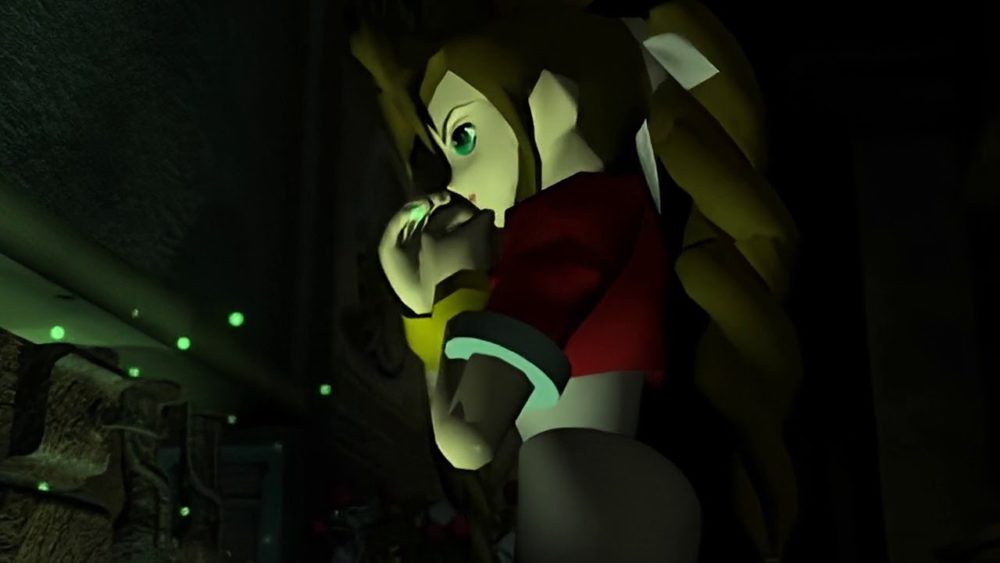With the hype behind the Final Fantasy VII Remake revitalized after a trailer was recently released, fans have once again started to buzz about what’s to come. Opinions are flying left and right, be it feelings about the remake’s action-RPG combat, Barret’s voice, or plans for an episodic release.
One thing that everyone does seem to agree on is that, given so much time, Square Enix has got to get this game right.
That being said, let’s talk about the five parts of Final Fantasy’s core storyline that Square Enix can’t afford to mess up in Final Fantasy VII’s remake.
Please be advised that this article contains spoilers for Final Fantasy VII.
Escaping From Midgar

This moment will forever remain one of the greatest game-starting atmospheres in JRPG history, and that isn’t a statement made through the lens of nostalgia.
If you never had the opportunity to experience Midgar as an unspoiled adventure, let me explain why the remake has to recreate this area properly.
Playing through Midgar alone offers an experience that outshines some other RPGs of Final Fantasy VII’s time, and Square Enix recently confirmed that the Final Fantasy VII Remake will be released as a series of episodic titles.
Don’t be surprised if Midgar takes up the entire first episode.
Luzbelheim’s world-record run of Final Fantasy VII has him escaping Midgar a little under 1 hour and 33 minutes into the game. This was set in February of this year, so bear in mind that it includes the newly discovered Sector 7 skip—a massive time-saver.
The final run time was 7 hours and 14 minutes, which means escaping Midgar accounted for over 21% of his playtime. Of course, a speedrun and casual playthrough operate very differently—still, few other RPGs have put such an emphasis on their starting area.
Midgar really hit a sweet spot during my first playthrough of the game. The feeling of finally getting out of those run-down slums and seeing the brighter, more vibrant colors of the outside world was jolting.
This is also the first time you see Final Fantasy VII’s world map, which invokes the feeling of having so much more ahead of you.
It leaves the player wondering many different things: How much content is in this game? Are the other towns going to provide such a story-rich adventure? Am I really only just getting started?
While Square Enix’s remake won’t be able to recapture this exact same feeling for those of us who’ve played the original, it’s important that Midgar be an exhausting and exciting experience. It’s the perfect appetizer for such an awesome game.
Gold Saucer

Final Fantasy VII’s Gold Saucer was so iconic that Square Enix had to bring it back in Final Fantasy XIV.
While The Manderville Gold Saucer isn’t exactly the same, it did open our eyes to what the original might look like on a later-generation console, where processing and display capabilities have much evolved.
XIV came out 13 years after VII, and the remake of VII will come out at least a decade after XIV. That leaves plenty of room for improvements on round three!
Traveling to the Gold Saucer follows a somber part of the story, which takes place in Corel Prison. Without spoiling it, I can definitely say that this sudden contrast makes for one of the most unique experiences in any of the early Final Fantasy titles.
Finding Gold Saucer is similar to escaping from Midgar in the way that, on your way, you aren’t quite sure what to expect.
The opening cinematic as you travel by cable car to Gold Saucer is vibrant and exciting, preparing players for their first detour away from a deep and emotional story to a fun and charming amusement park.
In the remake, it’ll be interesting to see how Square Enix treats the Gold Saucer’s minigames. This gameplay doesn’t exactly translate well to eighth-generation consoles, so will Square Enix spruce them up or change them entirely?
Gold Saucer is filled with some of the best dialogue and cutscenes in the game, too. I hope Square Enix really knocks it out of the park during Cloud’s date and the Event Square.
Final Fantasy VII is an RPG with a serious—even dark—tone throughout the majority of it. Gold Saucer is one of the Square Enix team’s few chances to show how lively and colorful they can be, and I hope it looks and feels incredible on the PlayStation 4.
Temple of the Ancients

There are a handful of non-Midgar areas that make Final Fantasy VII memorable—Junon, Cosmo Canyon, and Wutai, just to name a few—so, why is it so important for the Temple of the Ancients to stand out in the remake?
The Temple of the Ancients is to Final Fantasy VII what the Water Temple is to Ocarina of Time. Not only is it a crucial point in the story’s development, but it also veers into some new and interesting puzzle-solving gameplay.
The temple itself is a maze, and you’ll need to explore it to find several useful items, like Cid’s Trident, and reach the end to continue in your journey.
It includes the “giant clock room,” too, which operates the same way—plenty of goodies scattered throughout it, and it’s on you to find your way out.
There’s also “the ledge,” which is a cliffside with 10 doors that you have to navigate through in classic trial-and-error fashion.
It’s one of the few parts of the game where you may feel tempted to use Google—or, in those times, a strategy guide—and it ends with two important bosses: Red Dragon and Demon’s Gate.
Demon’s Gate has been dubbed Final Fantasy VII’s “run killer” due to how it behaves against the current optimal speedrun route. Bad RNG during this fight can bring an immediate end to even the most perfect run.
The Temple of the Ancients isn’t just someplace where you’ll find great weapons, Materia, and bosses, though. It’s a breakpoint in the story where we realize just how important the Black Materia will be throughout the rest of the game.
Let’s hope that the remake can really capture the importance of this spot, and I can’t wait to see the new Demon’s Gate!
Aeris’ Death

This should come as a surprise to no one. There’s no doubt that the death of Aeris—or Aerith, without transliteration—was the most shocking and emotional death in video game history at the time of Final Fantasy VII’s raving popularity.
There have been many deaths in gaming since then, but recapturing the magnitude of this tragic moment may be one of the biggest challenges for Square Enix.
If there’s any scene in the Final Fantasy Remake that everyone’s eyes will be on, it’s this. It’s the most memorable part of the game for so many people, and if it’s executed poorly in the remake then Final Fantasy VII fans will not let it slide.
That being said, the original cinematic was far from perfect. Here are just a few examples:
- When Aeris is first seen at the altar, she’s facing the stairs with her back to the railing. However, when Sephiroth comes down with the Masamune, both have their backs to the stairs. When the FMV ends, they’re again facing the stairs.
- When Aeris is first seen at the altar, she’s kneeling on black and white tiles. When the FMV ends, the floor is a single color.
- In the scene where Sephiroth descends, he’s shown barehanded—yet, in the scene where he pulls the Masamune out of Aeris’s back, he’s suddenly wearing gloves.
These flubs did nothing to take away from this iconic moment when we all experienced it for the first time, though. As a matter of fact, most people probably never notice these inconsistencies.
While it’s granted that this scene will be more beautiful on the PlayStation 4, it’ll be interesting to see if Square Enix decides to address issues like these or intentionally include them as a nod to the original.
Cloud’s Subconscious

The inner workings of Cloud have become an incredibly polarizing aspect of Final Fantasy VII—many fans seem to either completely love or flat-out hate it.
Final Fantasy VII is riddled with moments where its protagonist has introspective episodes.
During these times, which often take place on an empty screen, Cloud will ask himself questions and think aloud in a way that can seem incoherent and confusing to first-time players.
To some, it helps build the story of a deeply disturbed hero. To others, it’s just more text boxes to mash through.
Cloud experiences multiple flashbacks throughout the game, too. He goes through a rather notable one in Kalm, and there’s also the infamous Nibelheim Incident. However, neither scene holds a candle to when Cloud and Tifa fall into the Lifestream in Mideel.
Following this event is one of the longest periods of dialogue in the entire game, one that can take up to 30 minutes depending on your in-game text speed and reading ability.
This is a point of the game where, with the help of Tifa, Cloud searches for himself and recalls several key moments of his life. There are no cutscenes, and it’s arguably the most important point in Cloud’s story development.
The remake of Final Fantasy VII has a huge opportunity to capitalize on this part of the game to tell the story better than the PlayStation original ever could.
Through voice acting and eighth-generation visuals, Square Enix has a chance to make the hairs on the back of our necks stand up.














Updated: May 15, 2019 09:16 pm